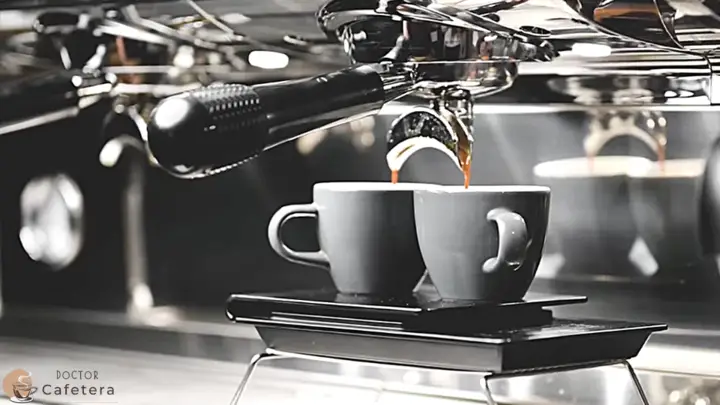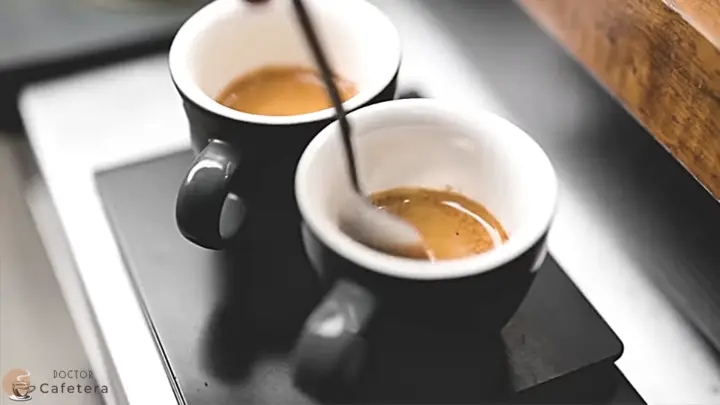On this occasion, I welcome you to a new article in which I will talk about a coffee recipe that has been well-known for a long time in the coffee world, the Ristretto. I will also debunk some myths and explain why most baristas prepare them incorrectly.
What is the Ristretto
Ristretto comes from Italian and means restricted or reduced. This refers to the flow of coffee in the espresso machine, where for a Ristretto, usually less water is allowed to pass through the same coffee pod than for an espresso.
Ristretto is even more concentrated, has a smaller volume, although the same amount of ground coffee is used, and is more intense, with more body. If you want to know the difference between an Espresso and a Ristretto, I have an article whose link I leave you here, where I explain the proportions and go deeper into the extraction.
Related: Differences between espresso, ristretto and lungo
Myths about the Ristretto
Everywhere you go, you will see and read that describe the Ristretto as almost a better coffee, where you get the best flavors from the extraction as sweeter, less acidity, and more silkiness and that it eliminates the bitterness in the coffee, so it is easier to drink. But is all this true?
In the history of coffee and its various waves or stages, before the rise of specialty coffee as we know it today, it was normal to find commercial coffees of low-quality coffee in coffee shops. Therefore we saw beans with a very dark roast, with which they hid all these defects of coffee, changing the sweetness, acidity, and fruity flavors, for much more bitterness and smoke-like flavors.
Then, as the flavors that are obtained from the beginning to end in the extraction of a coffee are salty, acidic, sweet, and then bitter, to eliminate this bitterness from the coffee, they did cut the espresso drop to half the time or perhaps a little more, obtaining half the volume. For example, if the espresso was made with 30 seconds of extraction, the Ristretto with 15 to 20 seconds.
Again, this worked because of the type of coffee they used low quality and very dark roasts, where the least amount of extraction in terms of espresso would be ideal. I imagine that if a Ristretto with this type of coffee tastes acceptable, an espresso must not be pleasant at all.
Nowadays, with the spectacular coffees we have within reach, of very good quality, and good roasters that develop their full potential, this practice does not make as much sense as it used to. Let me tell you why.
The most important point is that everything will depend on your espresso recipe. If you develop a good recipe specifically calibrated for the coffee you are using, you are going to get a complete extraction; that is to say, you are going to get a lot of salty, acidic, sweet, and bitter flavors, which combine perfectly to produce a completely balanced coffee.
It is unnecessary to cut the extraction beforehand to obtain this; if the extraction is cut beforehand, it will no longer be balanced and will have a completely different flavor.
Mistakes that baristas make when preparing the Ristretto
If you are working in a coffee shop where most of the drinks are espresso-based, you should already have your espresso grinder calibrated for the ideal recipe for that type of coffee, and the espressos come out great.
So, suppose when you are asked for a ristretto, you proceed in the same way as you do to prepare espresso and cut the extraction to half the time. In that case, the result will be an under-extracted coffee with little body, sour flavors, and without sweetness, which happens most of the time.
The correct way to prepare a ristretto with a specialty coffee is to modify the espresso recipe. Suppose we want the ratio or proportion of coffee and water to be lower. In that case, we will have to, for example, fine-tune the grind and experiment with the variables until we find the complete extraction for that proportion.
What would happen if you ask for an espresso again later and prepare it with the ristretto recipe? If you leave it longer, it over-extracts, and we get very bitter, astringent flavors and a flavorless empty feeling, so we would have to modify the grind again for the espresso recipe.
Imagine all this happening in a coffee shop with many volumes, where coffee is constantly being prepared; it is not ideal. It becomes a waste of time and bad service. Now, something that I want to clarify is that this is not a degradation of the Ristretto, I believe that well made, and with a particular type of coffee, it can be enjoyed, and many people like it.
Recommendations for preparing a Ristretto at home
The main thing is to choose a coffee with a medium or medium-dark roast. Coffees with light roasts are not suitable for this type of recipe since they require a greater extraction that cannot be achieved, and coffees with very dark roasts are not recommended because, as I mentioned before, they change the fruity and sweet flavors for roasted, smoky and ashy flavors.
Of course, you can do that if that is something you like. From there, it is a matter of tasting until you find the balance of all the flavors.
Note: in some countries, especially Latin America, many clients sometimes ask for a ristretto to allude to the fact that they do not want a full cup of coffee but simply a shorter, more concentrated coffee, so espresso is what they are looking for.
You may like this:


